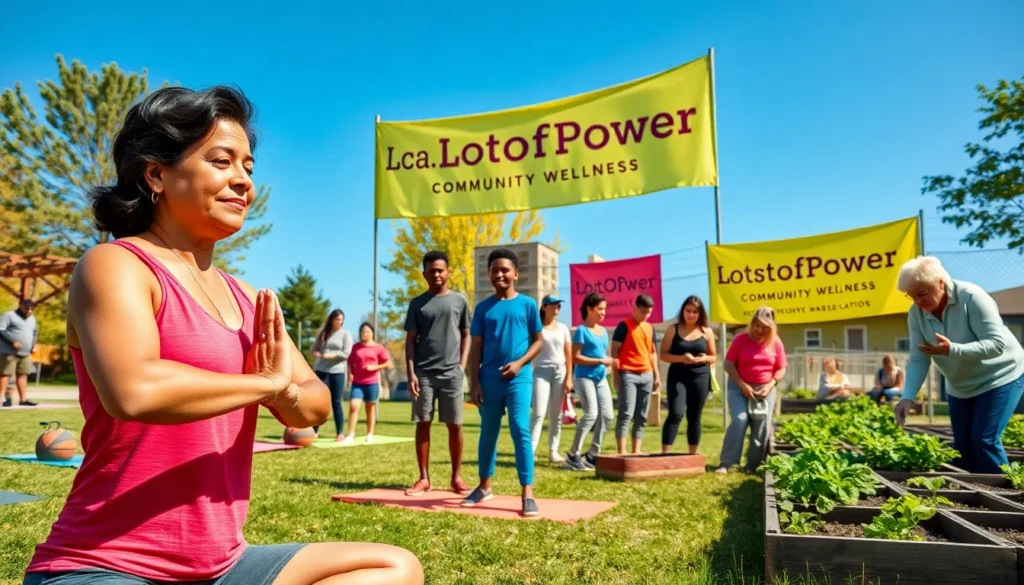In an increasingly interconnected world, the essence of community wellness holds a significant place in promoting individual and collective health. LotsOfPower stands at the forefront of this movement, offering a holistic approach to community wellness that engages and empowers individuals. Understanding the dynamics of this concept is crucial for fostering a healthier society, where people thrive not just in isolation, but as part of a vibrant community. This article delves into the core ideas behind community wellness, the importance of community engagement, and effective strategies to foster wellness in diverse populations.
Table of Contents
ToggleUnderstanding Community Wellness

Community wellness transcends individual health: it encompasses the collective well-being of a population. This concept involves various aspects, including physical health, mental well-being, social connectedness, and economic stability. It encourages individuals to engage with each other, creating a supportive environment that nurtures growth and resilience. Community wellness goes beyond merely addressing health issues: it seeks to create an atmosphere of mutual care and shared responsibility. By prioritizing community wellness, individuals contribute to a sustainable, thriving society where everyone has the opportunity to flourish.
The Importance of Community Engagement
Engagement within a community is vital for establishing a sense of belonging and purpose. When individuals participate in community activities, they not only share their talents and resources but also strengthen social bonds that support overall well-being. Community engagement fosters an environment where people feel valued and accountable. This engagement can take many forms, such as volunteering, joining local initiatives, or participating in wellness programs.
The ripple effect of community engagement is profound. Studies show that individuals who actively participate in their communities experience lower levels of stress and a greater sense of happiness. It creates a feedback loop: the more people engage, the healthier the community becomes, thereby encouraging further participation and collaboration.
Key Components of Community Wellness
Successful community wellness initiatives are built on several key components:
Initiatives and Programs for Wellness
- Health Education Workshops: These help individuals understand health issues and promote healthy lifestyles.
- Recreational Activities: Community sports leagues, yoga classes, or walking groups foster physical health and social interaction.
- Mental Health Support Services: Access to counseling and peer support groups can significantly enhance mental well-being.
- Nutrition Programs: Initiatives focusing on healthy eating, such as community gardens or cooking classes, encourage better dietary habits.
By implementing these components, communities can develop a comprehensive approach to wellness that addresses diverse needs, ensuring that they remain inclusive and effective.
Strategies for Building a Wellness Community
Creating a thriving wellness community requires strategic planning and execution. Here are some effective strategies:
- Foster Inclusivity: Ensure programs address the needs of all community members, regardless of age, background, or ability.
- Leverage Local Resources: Partner with local businesses, schools, and organizations to enhance programs and reach a broader audience.
- Use Technology: Online platforms can be used to manage events, foster communication, and provide resources for wellness.
- Promote Awareness Campaigns: Use social media and local outreach to raise awareness about wellness programs and engage more individuals.
Measuring Community Wellness Success
To understand the effectiveness of wellness initiatives, communities must establish metrics to assess their success. Surveys, participation rates, and health outcome data can provide valuable insights into the impact of wellness programs. Regularly measuring these factors allows for adjustments to be made, ensuring that the initiatives remain relevant and effective.
Challenges in Promoting Community Wellness
While the journey towards community wellness is rewarding, it is not without challenges. Common obstacles include:
- Resource Limitations: Many communities struggle with funding and access to essential services, making it difficult to carry out comprehensive wellness programs.
- Diverse Needs: A variety of cultural and socioeconomic backgrounds can complicate the development of universally accepted wellness initiatives.
- Engagement Barriers: Individuals may feel disconnected from the community or doubtful about the effectiveness of programs, hindering participation.
Overcoming these challenges requires innovative thinking and collaboration among community members, local leaders, and policymakers. Dialogues focused on understanding these barriers can lead to the development of tailored solutions that address the unique needs of each community.
Conclusion
Community wellness is a multifaceted concept that plays a crucial role in the overall health of individuals and societies. LotsOfPower’s commitment to fostering an inclusive, engaging, and supportive environment is paving the way for communities to thrive. By prioritizing community engagement and addressing the core components of wellness, communities can navigate the challenges they face, eventually creating a healthier, happier population. Embracing the principles of community wellness is not just beneficial: it is essential for building resilient societies.








